This article contains a list of my favorite books with a major impact on my Software Engineering career. The books are categorized in:
- Software Engineering
- Programming
- Brian Kernighan’s Books
- Modern Classics
- Learning
- Management and Leadership
- Unix Books From Stevens
Software Engineering
A Philosophy of Software Design
by John Ousterhout
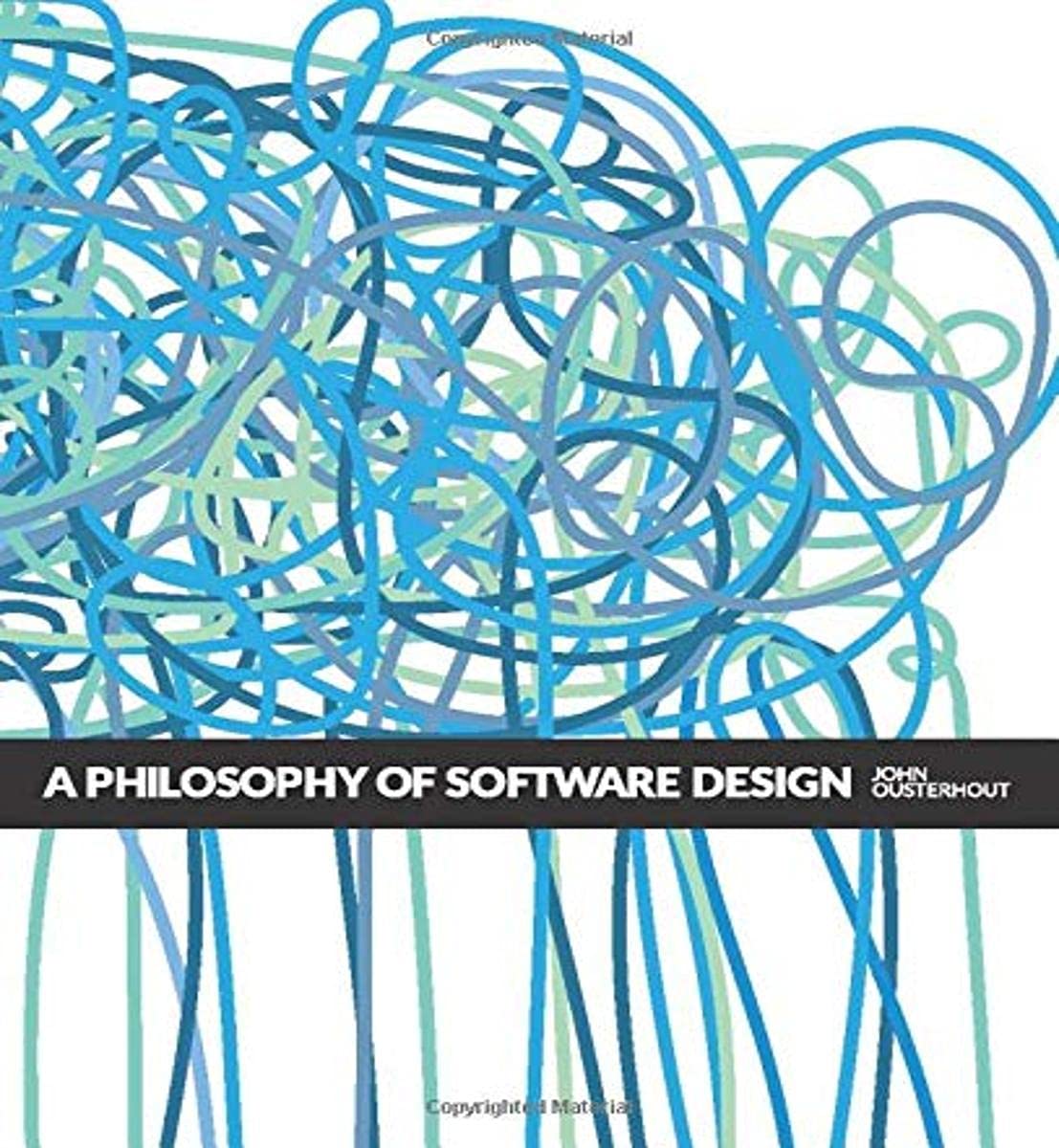
A fabulous book to level up your software design skills as an experienced engineer. The book is full of great advice. You often will relate to your own experiences (and mistakes). It mainly speaks about how to manage complexity with information hiding, low coupling and high cohesion.
Highlights:
- shallow vs deep modules
- tactical vs strategic programming
- Design it twice
- Importance of good naming
- Importance of good code comments
- Avoid Classitis
- Define errors out of existence
The Pragmatic Programmer
by Dave Thomas and Andrew Hunt

The Pragmatic Programmer is a whirlwind of highly effective programming practices and a great addition to A Philosophy of Software Design. It focuses more on practical programming skills and teaches how to approach programming problems in general. Even after twenty years, it is highly relevant today.
Highlights:
- DRY principle
- Orthogonal design
- Rubber Ducking
- Broken window theory
- Programming by Coincidence
- Design by Contract
- Importance of Tooling (shell, text manipulation, editor, IDE, version control etc.)
Code Complete
by Steve McConnell
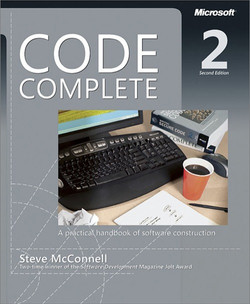
An all-time classic about all facets of programming. In the 90s and the early 2000s, Code Complete was the undisputed programming bible. If you want to learn about the ins and outs of programming, this book is for you.
Highlights:
- High-Quality Functions
- High-Quality Classes
- High-Quality Software Design
- Good Comments
- Code Tunings
- Testing
- Debugging
- Pseudo Programming Process (PPP), an almost forgotten alternative to TDD
Clean Code
by Robert C. Martin
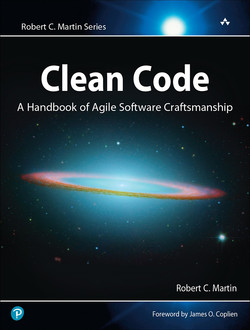
Clean Code will teach you good programming techniques and styles. It coined the term clean code and is a great read for junior and medium programmers. Unfortunately, it aged quite heavily and is has it quirks. What bugged me the most are the lengthy and hard to comprehend code examples. My personal pet peeve is the Clean Code prime generator . Compare this with my pragmatic implementation. On top of that, the mantra-like writing style can cause furious discussions at work if teammates treat the book as their “bible”. Nevertheless Clean Code taught generations of programmers and is rightly considered a classic.
Highlights:
- Naming things
- Good functions
- Good Classes
- Good/Bad Comments
- TDD flow and Unit Tests
- SOLID principles (contained in the book but the catchy name was invented later)
Refactoring
by Martin Fowler
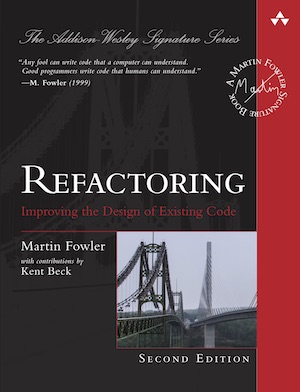
Martin Fowler is a giant in modern Software Engineering. He was involved in countless seminal contributions in the last decades. For me Refactoring had the most impact. The biggest part of the book is a catalog of refactoring strategies classified into categories like encapsulation, API, inheritance etc. But the most important thing is: The book teaches how to think as an effective programmer. More so, Refactoring pinpoints a clear way of writing code efficiently, always focusing on keeping code complexity low.
Highlights:
- Refactoring as a design tool
- Writing code efficiently and pragmatically
- small code changes which are easily reversible
- If you cannot add a feature conveniently, refactor first
- If code is never touched, refactoring is probably a waste of time
- refactoring first, performance tunings later (it’s much easier to tune clean code)
- “Always leave the code base healthier than when you found it.”
- “If someone says their code was broken for couple of days while they are refactoring, you can be pretty sure they were not refactoring.”
- Teaches the coherence of Refactoring and TDD
- refactoring without tests is not refactoring
- changing tests during refactoring is a sign of bad design or brittle tests
- Detect and Eliminate Code Smells
Test-Driven-Development
by Kent Beck

The best introduction into one of the game-changing programming techniques of the last decades. It is an outstanding guide for TDD. Still, TDD is a big topic and a thoughtless use of TDD could end up in a maintenaince burden. For an outright view, you should consult other resources which consider fallacies like brittle and flaky tests, overuse of mocks and long-running tests.
Highlights:
- Real Life Unit Test example (Money Class)
- xUnit Test Framework
- test patterns
- test isolation
- test first
- test fixtures
- learning an API or a framework with tests
Design Patterns
by GoF aka Erich Gamma, John Vlissides, Ralph Johnson, Richard Helm
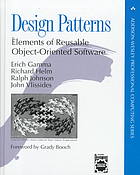
A seminal textbook from the 90s. Patterns build the foundation for well designed OOP systems. The biggest achievement of design patterns is the facilitated communication between engineers. It is no longer necessary to drone on programming details but sharing the pattern name is enough.
Highlights:
- OOP design
- Recurring design patterns explained
- Singleton
- Visitor
- Adapter
- Builder
- Command
- Facade
- Iterator
- Observer
Extreme Programming Explained
by Kent Beck

The real book about agile. All commercial agile frameworks like Scrum, Kanban and SAFe are based on Extreme Programming (XP). The practices and principles presented here are everlasting and can be applied in any contemporary project.
XP can exist without Scrum. Scrum cannot exist without XP.
Highlights:
- Pair Programming
- Continuous Integration CI/CD
- Daily Deployment
- Cross-functional teams
- Incremental Builds
- Testing early, often and automated (TDD)
- Customer Involvement
- Sustainable Pace
Domain Driven Design
by Eric Evans

A classic from the early 2000s. It coined the term Domain Driven Design (DDD) and is still the best way to structure medium- to large-sized business application. With the rise of microservices, the most influential concepts like Strategic Design, Ubiquitous Language and Bounded Context are even more relevant today. Besides the standard tactical design notions like Entities, Aggregates, Services and Repositories, you can find great refactoring advice too, e.g. Intention-Revealing Interfaces, Side-Effect-Free functions, domain class invariants with explicit constraints etc. Alas, DDD is verbose, luckily a more condensed version with the essential ideas can be found here.
Highlights:
- Strategic Design
- Bounded Context
- Ubiquitous language
- Layered Architecture
- Modules
- Entities, Value Objects, Aggregates
- Services
- Repositories
- Factories
- refactorings:
- intention-revealing interfaces
- domain class invariants
The Mythical Man-Month
by Fred Brooks
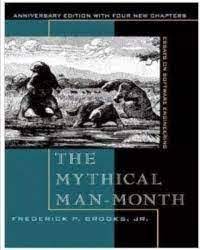
The last book in the Software Engineering category but the most influential one. Brooks wrote down his experience of leading the development of IBM’s gigantic OS/360 operating system. The project effort was roughly 5000 man years. The book is full of famous quotes, contains seminal Software Engineering ideas and is clearly a must-read for anyone working in the IT area. After forty years, highly relevant today!
Highlights:
- Adding manpower to a late software project makes it later.
- Nine women can’t make a baby in one month.
- Second System Effect (aka over-engineering)
- No Silver Bullet
- Plan to throw one away (aka prototyping)
- Surgical Team (aka small cross-functional teams)
Programming
Structure and Interpretation of Computer Programs (SICP)
by Harold Abelson and Gerald Jay Sussman with Julie Sussman
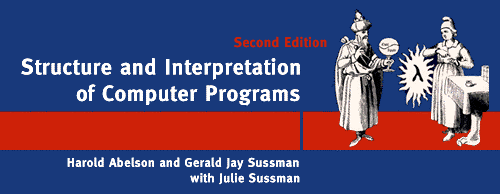
The best programming book ever written, period. The book is the best introduction to programming and will teach you all basic concepts a programmer must know. This includes expressions, procedures, recursion, evaluation and lot more. Advanced concepts are covered too, like lazy streams, memoization and concurrency. Exercises at the end of all chapters help you to revise and deepen the acquired knowledge. A highlight is the implementation of some OOP concepts like polymorphism and encapsulation from scratch. Experienced Java or C++ developers will be fascinated how simple it can be!
Nowadays there is also a contemporary Javascript edition, but I myself prefer Scheme.
Highlights
- Great way to learn programming
- Learn timeless programming practices that stick with you forever
- Pure functions, the assignment statement is introduced at page 220!
- Lisp expands your horizon
- Write an Interpreter and Compiler (understand how a programming language works)
LISP is worth learning for a different reason — the profound enlightenment experience you will have when you finally get it. - Eric S. Raymond
Paradigms of AI Programming (PAIP)
by Peter Norvig

The second best programming book ever written and in a way a continuation of SICP for experienced developers. It contains a lot of code, mainly solving AI problems. The code is full of great advice applicable to modern general programming. You will learn Common Lisp which is eye-opening for itself. Further you are guided how a software developer builds his own tools like logging, debugging and even more important how a developer tackles bigger, complex tasks. Norvig himself is a terrific coder. His code is the most elegant I ever read. He also maintains a Github repository called pytudes where he collects nifty Python programs. For example you can find there Norvig’s exquisite AdventOfCode solutions.
Highlights:
- Enjoy one of the most elegant codebase ever written
- Learn Lisp
- Create an OOP system from scratch in a few hundred lines of code!
- Write famous classic AI systems: Eliza, Search Algorithms, Solving algebraic equations
- Advanced programming techniques:
- write a Scheme interpreter
- make it fast as a Compiler
- Performance optimizations like Memoization, Compilation
The Little Schemer
by Daniel P. Friedman and Matthias Felleisen
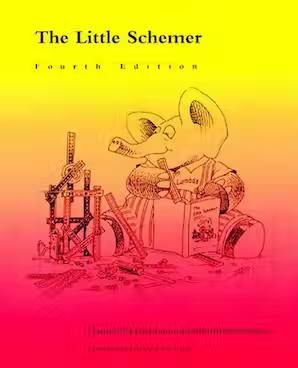
A book about recursion. Or let me rephrase: The book about recursion. After you get used to the tutorial question-and-answer style, The Little Schemer is the best resource to understand recursion. At the very end, you will derive the Y-Combinator, which allows anonymous function recursion. A mind-bending experience!
In order to understand recursion, one must first understand recursion. - Anonymous
Introduction to Functional Programming 1st Edition
by Bird Wadler

According to Erik Meijer, the best introduction to functional programming. For learning purposes, the purely functional programming language Miranda is used. Miranda is an ancestor of Haskell, both belong to the ML family. Once you get the hang of it, it makes you a better programmer in any language.
Highlights:
- first class function, high-order functions
- map/filter/reduce
- Recursive Data Types (Lists, Trees)
- Currying
- Pattern Matching
- Lazy Evaluation/Data Structures
Programming Pearls
by Jon Bentley
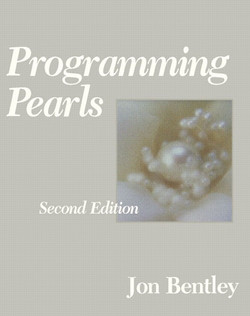
Timeless programming lessons packaged in short essays about excellently selected programming topics like data structures, algorithms, sorting, searching, performance. Bentley’s writings are from a time when cpu and memory were scarce and performance optimization were mandatory. But such circumstances make the solutions even more fascinating. The problem treatments are eye-opening and most importantly they are entertaining. The best thing is that all chapters end with crispy exercises in order to intensify your knowledge.
Fun fact: Bentley writes about creating a test harness – long before TDD was a thing.
The Algorithm Design Manual
by Steven Skiena

Data Structures and Algorithms are the bread and butter for every programmer. Hence a good reference book is essential. I chose The Algorithm Design Manual because it provides the best combination of theory and practice.
The book is structured in two parts. The first one is an introduction to algorithm design, Big O notation and standard topics like data structures, sorting, searching, recursion, dynamic programming and graphs. For good measure, each chapter ends with exercises perfectly suited for your coding interview preparation. The second part is the real gem: a wide and well-structured catalog of algorithms and data structures with graphical representations that make searching a breeze. It is actually fun to just browse the catalog because you encounter interesting things at every turn.
A good alternative is Introduction to Algorithms.
The Art Of Programming
By Don Knuth

No programming book list is complete without Knuth’s magnum opus. Knuth himself received the Turing Award in 1974 and he is generally considered one of the greatest Computer Scientist ever. If you want to go deeper than The Algorithm Design Manual, The Art Of Programming is the way to go.
Historic fun fact: Because Knuth was not satisfied with the typesetting systems in the 70s, he invented TeX as a by-product. To the present day, LaTeX, a descendant of TeX, is the prevalent typesetting system in academia for math, physics, chemistry and computer science.
Brian Kernighan’s Books
Kernighan is a master in technical writing. I would go so far to claim that without his outstanding documentation about Unix and the C programming language, both technologies would not become so successful so fast. Good documentation is crucial for computer programs to thrive and to build up a community. He calls Ken Thomson a “singularity in programming”, I call Kernighan a “singularity in technical writing”.
The C Programming Language
By Brian W. Kernighan, Dennis Richie
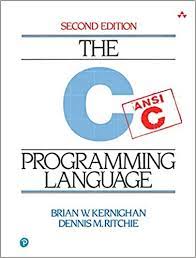
The book has a legendary status and needs no introduction. It offers a concise and terse tour through the complete C programming language and sets the standard for programming language reference manuals.
Fun fact: The famous Hello, world! program originates from this book.
The Practice Of Programming
By Brian W. Kernighan, Rob Pike
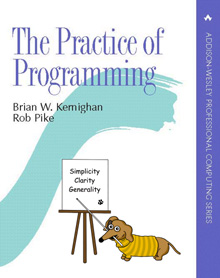
A compendium of ageless programming practices, relevant for any programming language and for any skill level.
Highlights:
- Coding Style
- Data Structures and Algorithms
- Designing Programs
- Traits of good APIs/Interfaces
- Debugging practices
- Testing practices
- Performance, Profiling
The Unix Programming Environment
By Brian W. Kernighan, Rob Pike
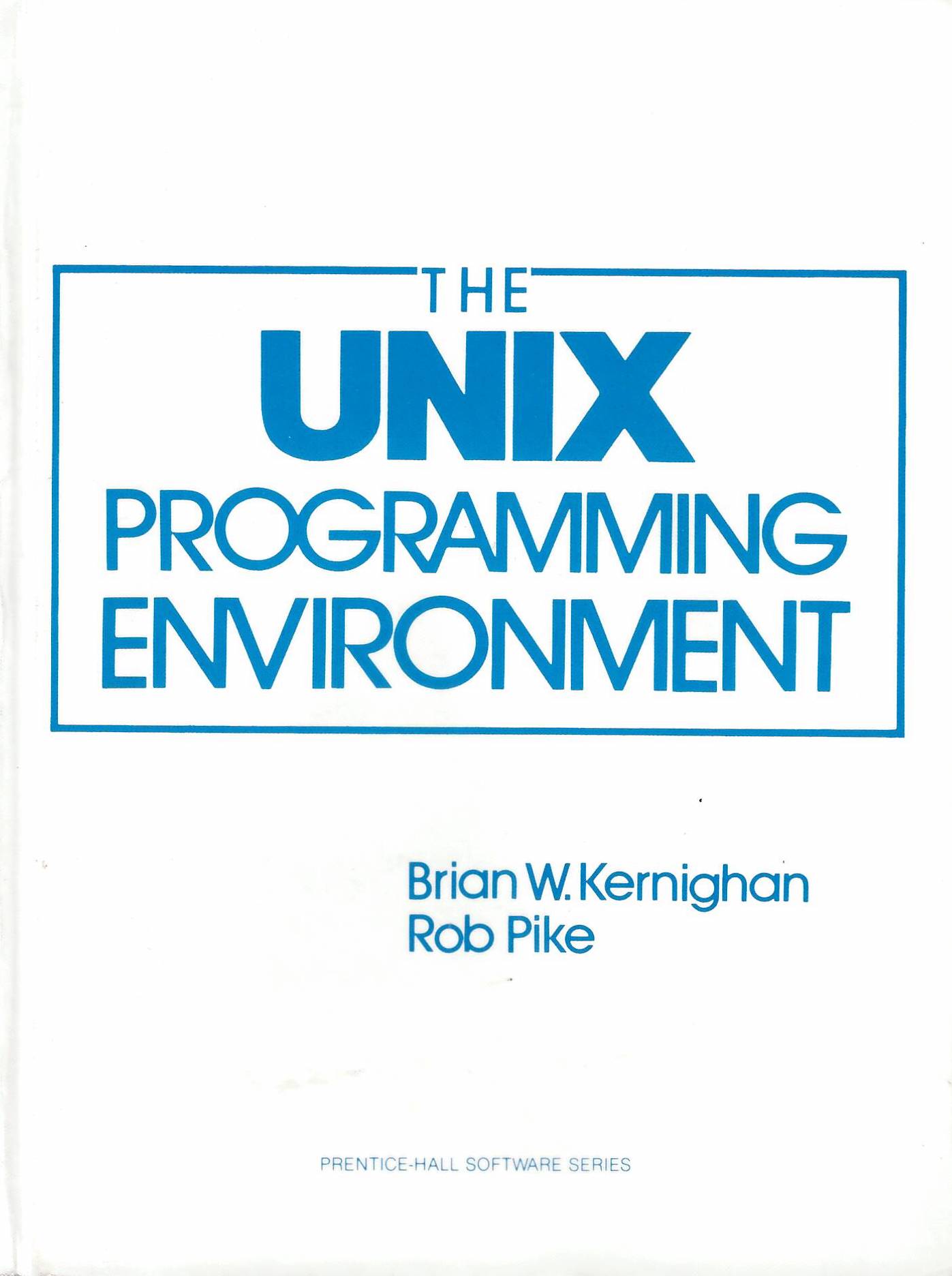
Old but Gold! A great guide into the Unix Programming Environment. If you use the shell regularly, it is a fantastic way to get more productive. And if you don’t use the shell, it will convince you that you do!
Software Tools in Pascal
By Brian W. Kernighan, P.J. Plauger

A little forgotten and underrated book, but one of my favorites. The advice in the book is priceless. It explains how to think as a productive programmer, how to approach larger programming tasks from the ground up and how to maintain an ever-growing codebase by using modularization and clear API design based on the Unix philosophy. Working through the book, you will build common Unix tools from scratch. I sometimes use this book in order to learn a new programming language because the exercises are universally applicable and the writing is so enjoyable.
Highlights:
- Build your own Unix tools
- cat
- find
- grep
- a complete editor
Modern Classics
Software Engineering At Google
by Titus Winters, Tom Manshreck and Hyrum Wright

A must-read if you work in the software engineering field. The book contains it all: engineering principles, practices, culture, tools, technologies and even management topics for building and maintaining modern software of any scale efficiently and effectively over time.
And the best, it’s free!
Highlights:
- Gives a glimpse how Google builds software
Designing Data-Intensive Applications
by Martin Kleppmann
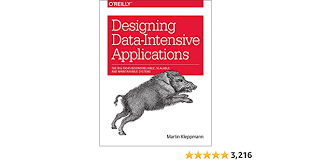
You work in a highly distributed IT landscape with microservices? Then this is a mandatory read for you. Kleppmann magically connects dry distributed systems theory with practical examples and lies down a lucid plan how to pick the best solutions for building real-world applications.
Highlights:
- Query-Languages
- Data Storage Engines
- Encoding Formats (JSON, Protocol Buffers, Thrift, Avro)
- Data Replication and Partitioning
- Transactions, ACID
- Consensus
- Big Data, Batch/Stream Processing
The Software Architect Elevator
by Gregor Hohpe
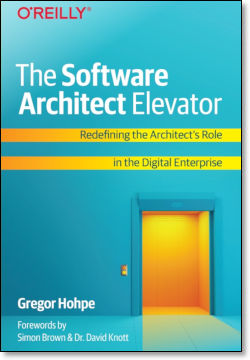
With the rise of Agile and evolutionary architecture, architects are not needed anymore. Wrong! UML diagrams and PowerPoint slides are obsolete, but modern architects ride the Software Architect elevator, i.e. this new kind of architect connects the penthouse (C-levels) with the engine room (software engineers) and all the levels in between. The book is worth reading just because of Gregor’s awesome metaphors. You find a great teaser in his awesome introductory talk.
Besides metaphors, architects will be equipped with tools to successfully drive digital transformations in large enterprises, detect organizational bottlenecks and unfold complexity in systems of any kind like IT systems or an organization itself. That said, it is a rewarding book for everyone working in IT, not only for (future) architects.
Accelerate
by Nicole Forsgren, Jez Humble, Gene Kim
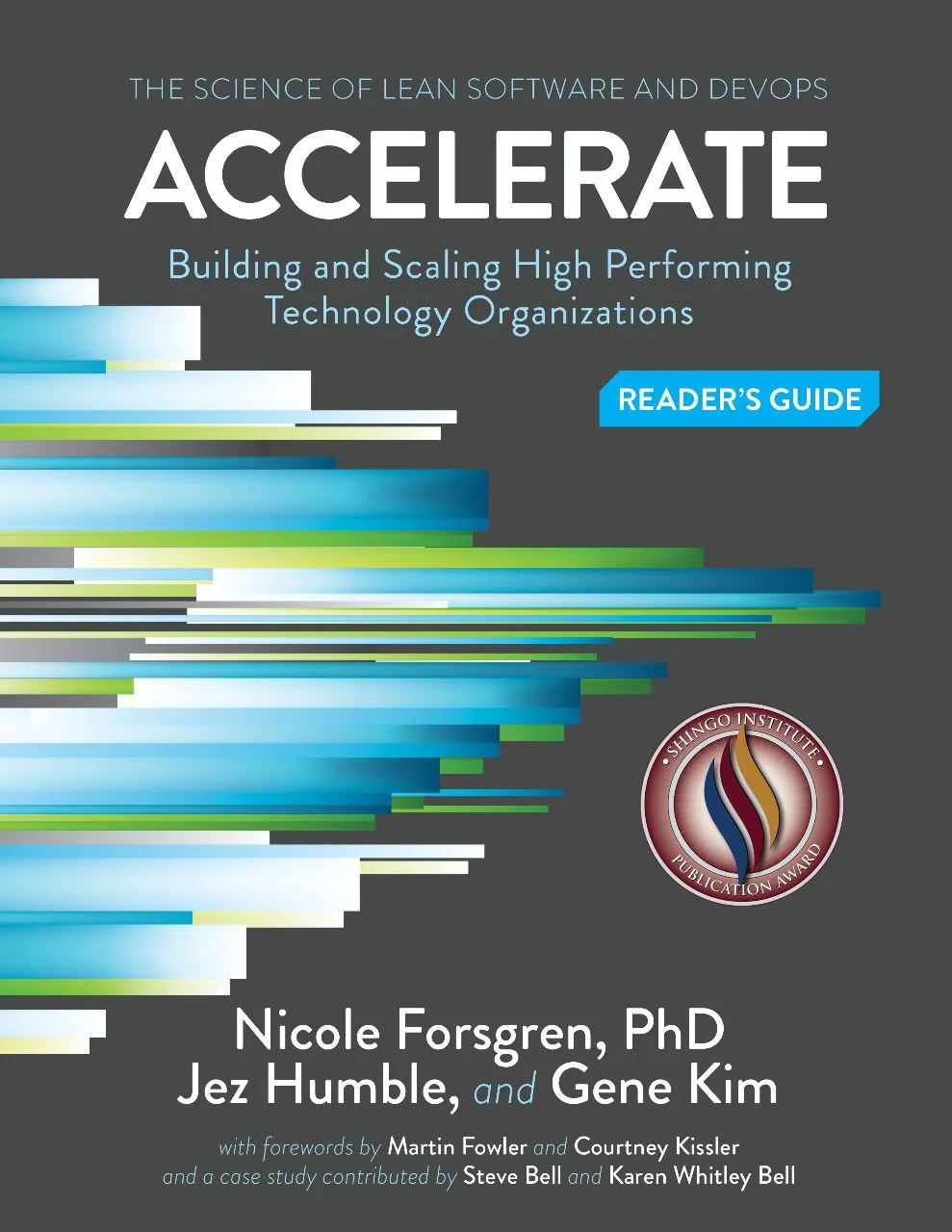
The DevOps book. Based on a four-year research, Accelerate presents the results on what makes up an efficient software company. You learn about practices to improve software development and delivery – both main factors boosting productivity, profitability and market share. At the core, the whole book is directed towards building an high-performance DevOps culture.
Highlights:
- Four Key Metrics
- Lead Time
- Deployment Frequency
- Mean Time to Restore
- Change Failure Rate
- Strategies and concrete practices to become a more efficient software company
- Automation
- CI/CD
- Automatic Testing
- Customer Feedback
- Value Stream
- Working in small batches
- WIP limits
- Westrum organisational culture, Learning culture
Learning
A Mind For Numbers
by Barbara Oakley
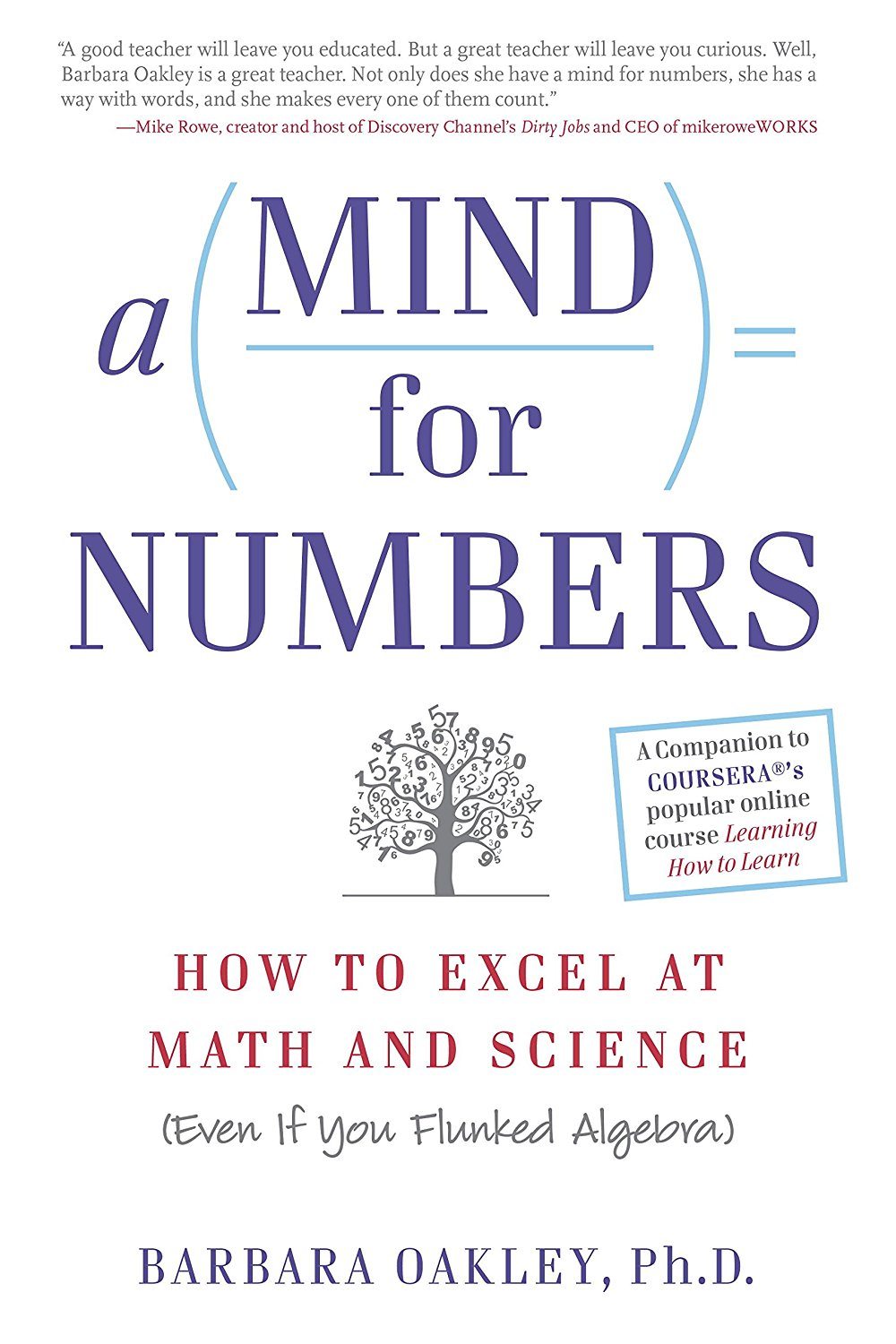
My personal favorite. The book massively changed the way I approach and learn new topics. I grasp them faster and more deeply. With the methodologies from the book, learning is fun! The corresponding online course Learning how to lean is freely available. As engineers, we never stop learning and this book is your best companion for your learning endeavours.
Highlights:
- Short Term vs Long Term Memory
- Focused vs Diffused learning
- Chunking
- Spaced Repetition
- Pomodoro Technique
- Self-Testing
Management and Leadership
The Manager’s Path
by Camille Fournier
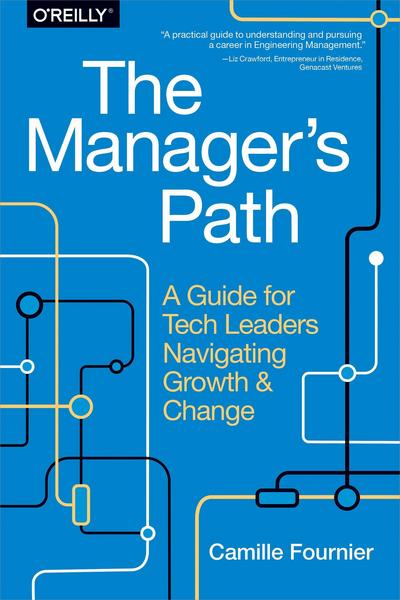
You want to take the next step in your career and want to approach a new position as engineering manager? Or you are already in a leading position and want to improve? Then this book is for you. It is a must-read for every manager. The Manager’s Path provides clear consultation about effective team management with tangible practices and real-world scenarios.
You want to stay an engineer? Fine!The Manager’s Path is a great for you too. It illustrates what you can expected from good managers, helps you detect and solve team-related problems or to enable other people. The extended perspective will make you a more precious employee for your organization, e.g with mentoring you can make a big difference:
How to be a 10x engineer: help ten other engineers be twice as good. - Peter Seibel
Highlights:
- 1-1s
- Mentoring
- Conflict Management
- Decision Making
- Debugging dysfunctional teams
- Dealing problematic team members (brilliant jerk, non-communicator)
- Covers the whole carrier path from managers to tech leads to directors to CTOs
Leadership Strategy and Tactics: Field Manual
by Jocko Willink
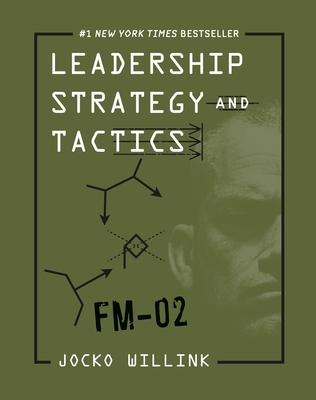
Jocko Willink is a former Navy Seal and mastered many life-and-death war situations. His leadership strategies are based on military operations but they are transferable to everyday situations. Leadership is not about a role, but about action and behaviour. Everyone can lead and push his team to better results.
Like The Manager’s Path, this book focuses on soft skills, especially on leading people in the most successful way to achieve a common goal. Technical hard skills are important but to be most valuable for your team, you need to take ownership and start to lead. Leadership Strategy and Tactics gives you the tools and the guidance for taking over leadership.
Overly focusing on tech is how you end up with the skills of a senior engineer and the experience of a junior human being. - Kelsey Hightower
Unix Books from Stevens
If you want to deep dive into Unix programming, Network/Socket programming or learn about Network Protocols and their implementations, look no further. The following mentions are all seminal textbooks in their field and will serve you as learning material as well as reference manuals.
Advanced Programming in the UNIX Environment
by W. Richard Stevens
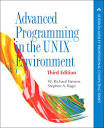
Unix Network Programming: The Sockets Networking API Vol 1
by W. Richard Stevens

TCP/IP Illustrated: The Protocols, Volume 1
by W. Richard Stevens
